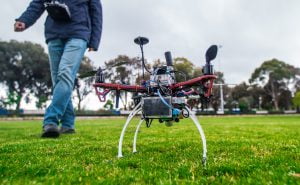Video production for educational content: engage and educate.
Educational videos are a powerful tool in motivating, engaging, and instructing students, offering a unique, experiential element that enhances their understanding. These videos, which range from behind-the-scenes looks at product creation to animations and videos about current trends, can help establish educators and companies as thought leaders in their fields. However, educators face several challenges when creating these videos, from familiarizing themselves with video technology and editing software to the demanding process of production. Despite this, the evolution of video technology has made this process easier and cheaper, opening up powerful opportunities for educators. By partnering with the right video production team, great educational videos can entertain, educate and help both educators and students achieve their learning goals.
Planning the Video.
As mentioned earlier, great educational videos don’t happen by accident. Educators must put time and effort into planning the perfect content for their audience – students.
Defining the Content and Objectives is the initial step. Start with the curricula or content that the video will be based on. Ask yourself how you can visualize that content. What are the key points that must be covered? Before video production, it is also extremely important to think about the context of use and the educational objectives to ensure that your video is structured to achieve its specific purpose.
Next, consider the Visual Format, which refers to the way that the educational content is delivered. Is it going to be a presentation, dramatization, interview, or demonstration? Carefully consider the content and choose the most appropriate approach considering the audience.
Scripting and Storyboarding is the final step in planning. Write the script of your video and highlight the most important points that have to be conveyed. Story-boarding is also a great way to visualize your ideas, thus making it easier for you to produce quality content. The storyboard acts as a guide not only for the producer but also for actors, presenters and voice-overs, providing them with a clear vision of the storyline and engaging them more within the process.
In conclusion, proper planning is the key to creating a successful educational video. Defining the content and objectives, choosing the visual format, and storyboarding are some of the major steps towards making an engaging and effective educational video that will resonate with your students.
Production Process.
Preparing for video production is an essential step. A well-prepared video project will make the video production and editing processes work like a breeze. Before the commencement of any video project, you must take some time to do the necessary planning. It may involve identifying the subject, topic or focus of the video, the message you aim to pass across, the intended audience or students, and the available resources.
Shooting is the most exciting aspect of the video production process. It’s the part where you get hands-on with the camera, and frames come to life. It’s important to ensure that every scene is filmed correctly and adequately because it will affect the quality of the final output. In shooting, continuity of the scene has to be maintained, so continuity is key, and always keep a backup. Ensure shots are well lit, appropriately focused and that the audio quality is sufficient.
Video editing is the final stage of the production process. It poses as a creative process. After shooting, it’s time to put all the pieces together and turn them into a comprehensive video. Video editing software allows the user to arrange scenes, reinforce narration with background music, add graphics or animations, and eventually produce a final output. Keep in mind that the editing process can make or break the quality of your video. Therefore, it’s essential to dedicate sufficient time and effort to this step.
Remember that planning takes up a lot of time, and it’s important to do it correctly. Plan adequately, have fun while shooting, and use your creative flair to produce a masterpiece.
Effective Educational Video Content.
Video has become an essential component of educational content production. To be effective, video needs to engage audiences and enhance learning engagement and retention. Educational videos must tell a compelling story and make complex ideas crystal clear. There are various types of educational videos such as animated explainer video series, real-life scenarios, and full instructional courses. Educational video producers like NextThought provide standout style, from expert hosts with stunning graphics to unbelievable animations and scenario-based learning situations. They ensure content expertise by creating over 1,000 education and training videos each year. By partnering with them, yours can become one of the most compelling videos, courses, or instructions out there.
To achieve your engagement goals, there are some essential tips educators must keep in mind. The visual format should be appropriate for the content, and simplicity is key. Use graphics and animations smartly and avoid going overboard with the features of transitions and graphics. Audio quality is crucial because poor sound quality can ruin a video. Producers should strive for continuous improvement through feedback.
Educational videos have several benefits, including improving the learning experience, enhancing retention, and increasing accessibility. Different types of educational videos include explainer videos, webinars, and tutorial and training videos. The overall content expertise of educators is one of the most significant determinants of the video’s success. When used effectively, video has a huge impact on educational engagement and retention. As a result, educators must create powerful video resources to aid in teaching and learning.
Benefits of Using Educational Videos.
Educational videos are a powerful tool to improve the learning experience of students. Using visual aids to convey complex topics and ideas can increase accessibility and enhance retention. Videos can provide a unique and interactive way of explaining content that may be difficult to understand only through traditional methods.
Educators can use videos to add an experiential value to the curriculum by showing places and phenomena that would otherwise be impossible to see. The ability to demonstrate procedural activities in detail can aid in self-reflection. Videos can be made even more engaging with graphics and animation when used properly.
Improved accessibility of educational content can be a game-changer for learners who might be struggling with traditional methods. Educational videos can provide an opportunity to learn through new and innovative approaches. They allow students to learn at their own pace while eliminating distractions and disruptions that often occur in a classroom setting.
Tips for Successful Educational Video Production.
When it comes to successful educational video production, simplicity is key. Don’t get too excited about all the available transitions and graphics and keep your video visually clean. Audio quality is crucial; viewers won’t stick around if they can’t hear what’s being said. Use graphics and animation smartly; too many can be distracting. Lastly, strive for continuous improvement through feedback. Your video should constantly evolve as you learn what works best for your audience. Remember, your goal is to engage and educate, not to overwhelm or bore.
The final word.
In conclusion, educational videos are an increasingly valuable tool for educators looking to enhance learning outcomes and engagement. Planning and producing educational videos can be a daunting prospect, but it need not be so. By following a set of best practices, educators can produce effective videos that deliver compelling content. From defining content and objectives to scripting and storyboarding, the planning stage is essential. Meanwhile, during the production process, the importance of preparation, shooting, and video editing cannot be overstated. Finally, by taking advantage of the benefits of educational videos, such as improved learning experience, greater retention, and increased accessibility, educators can help to transform the educational landscape. So why not get started today? With a little effort, educators can create high-quality educational videos that captivate and inspire their students.
More articles.

The rise of mobile video production: tips for success.
In recent years, the world of video production has undergone a transformative shift with the rise of mobile video production. The accessibility and convenience of

Video production ethics: responsibility and impact.
In today’s digital world, video production has become easily accessible to all. It is an exciting time with endless possibilities for creativity and expression. But

Video production on a budget: maximising resources.
Video production on a budget can be quite the challenge. As content needs grow, budgets often shrink or stay the same. Marketers find themselves at